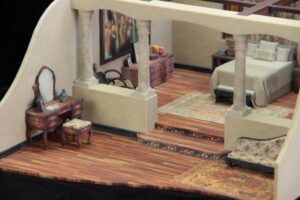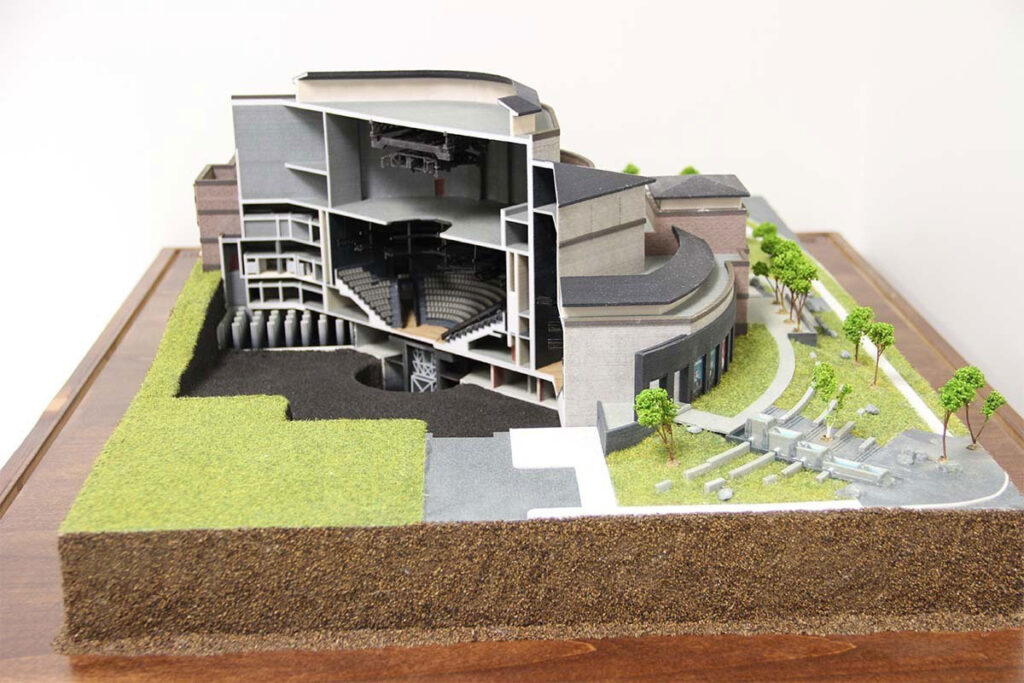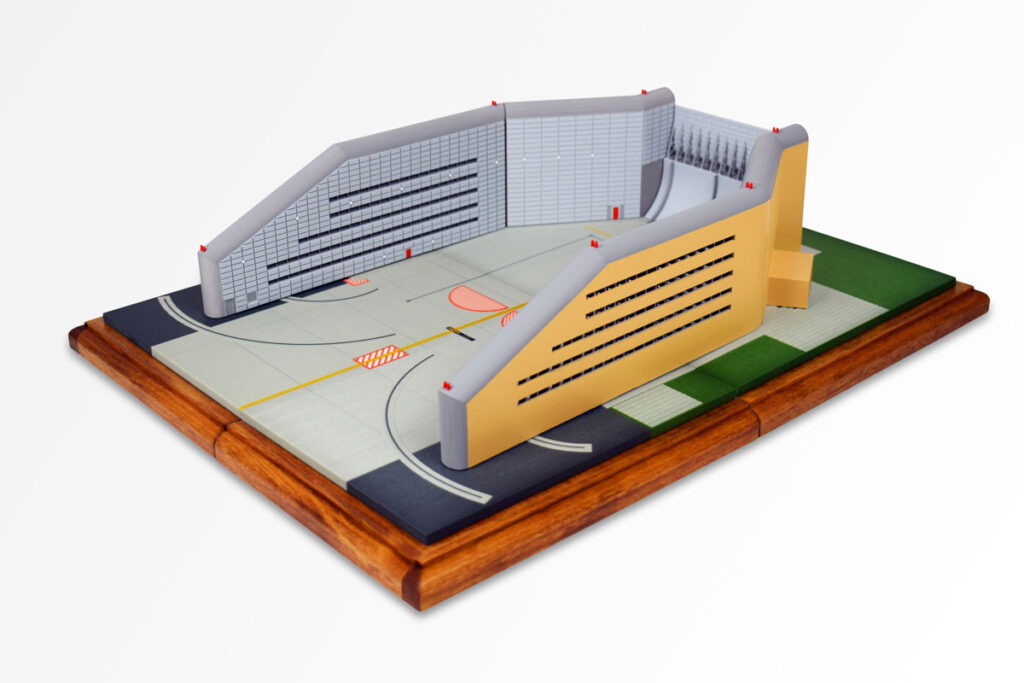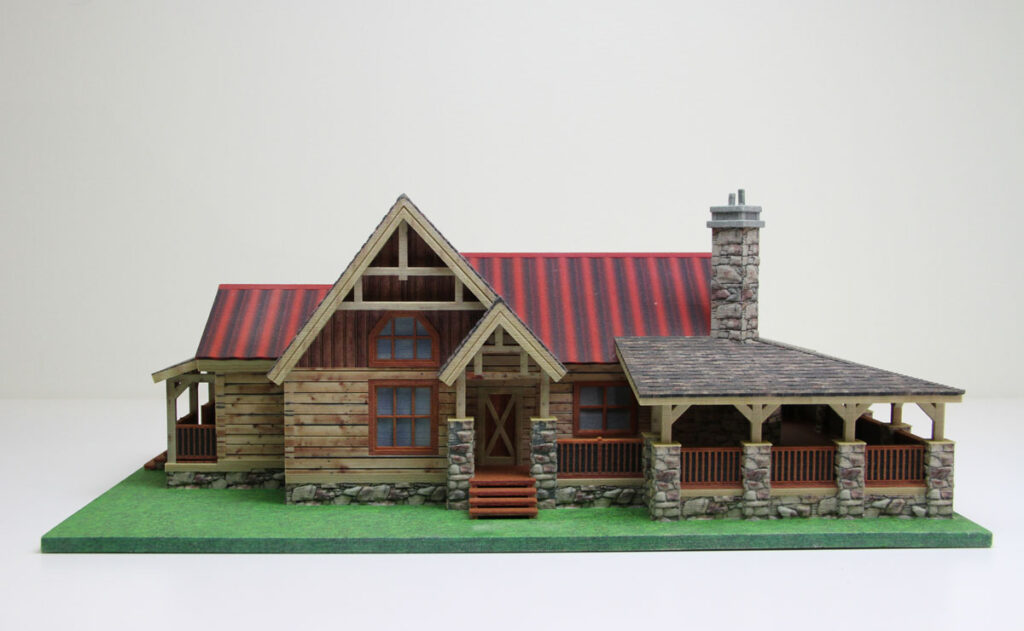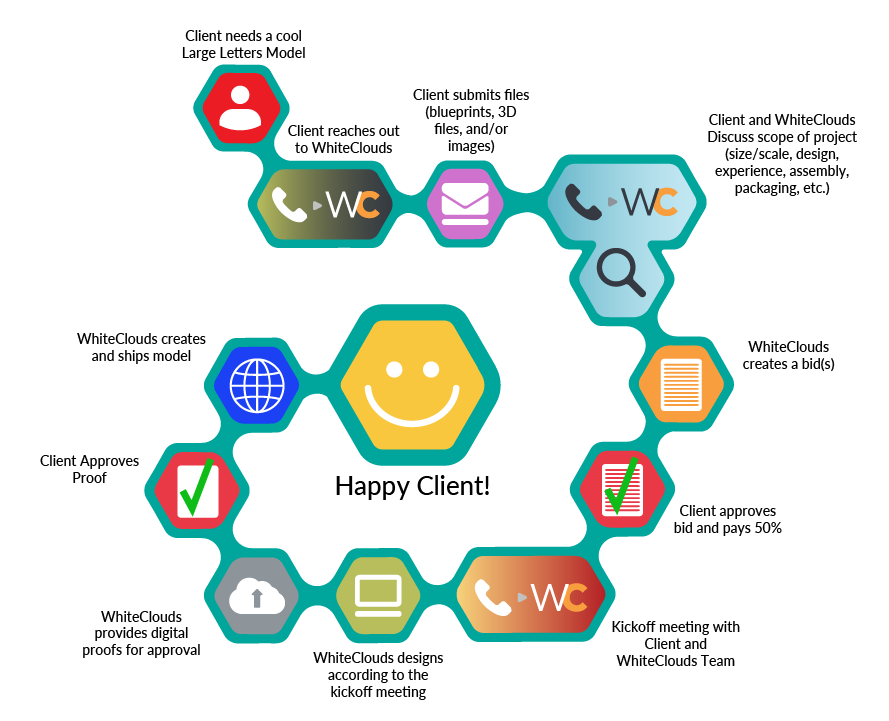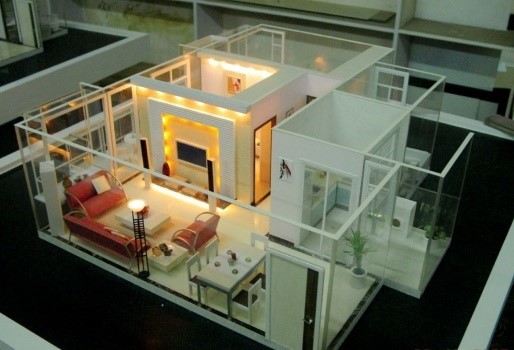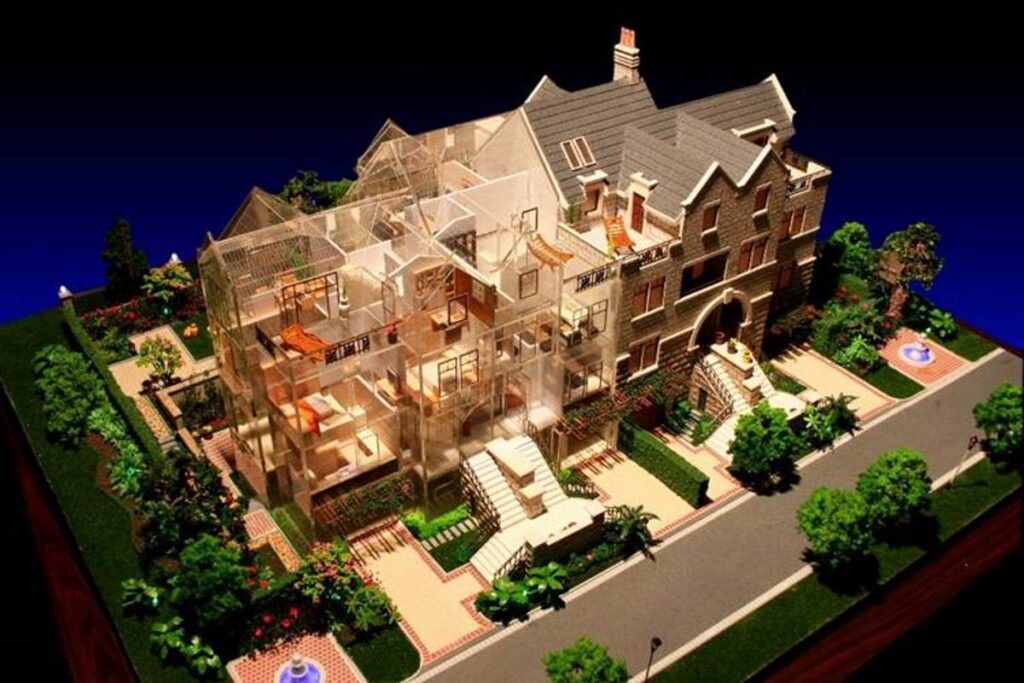Interior Models
We build Custom Interior Models
Tradition + Technology
Having the capacity to completely envision an interior of a residential model or commercial building is extremely difficult even if you are a professional designer. A 3D interior model can take the guesswork out of what the finished architectural project will look like. By adding furniture, floor plans, and traffic layouts can help you visualize all of those tough decisions that need to be make during any building project.
Today, 3-D printing and other technologies are changing the way that interior models can be demonstrated. A model can show precise details from tile layouts on the floor, to wall art, to designs in rugs and draperies, traffic flow, and most importantly is the size of the rooms in relationship to the desired furniture. For example, making sure you have plenty of room around the grand piano for furniture and guests to sit and enjoy the music is paramount – you don’t want them cramped together trying to feel the beat of the music.
Many times, the design phase of the interior is much more creative and exciting than the exterior. The exterior is something that is seen as you come and go, but the interior is where you spend most of your time – either working or living inside the structure. Getting the interior space designed correctly is crucial. 3D renderings are great, but you still can’t see a lot of the elements that you will see in 3d physical models.
Interior Models Project Gallery
Features & Benefits
- Physical models allow you to really see and study details that you wouldn’t normally think about. Making sure everyone understands exactly what is going to be built can save a lot of time and money in making changes later on. For example, making sure you have electrical plugs in the right positions as opposed to just relying on meeting county electrical codes.
- Imagine being able to look at shadows and lighting based on the position of the sun entering various windows and various times during the day or the year.
- Interior 3D models can be built with removable floors and removable roofs for multi-floor building structures. They can also be built with pull-out drawers to show various interior levels of the building.
- If you are not sure about furniture, it is very easy to make the furniture changeable and to swap out various designs and styles. This is what you might call a doll-house on steroids.
- Making sure simple sightlines are correct can be very beneficial. Imagine a front-door entryway led directly to the bathroom door. If the door was left open, you may not want to see the toilet. Many times these types of details regarding sightlines are completely missed in renderings.
- Showing proportion. How many times have you wished that a particular room was a different size. A 3D model can bring out exact proportions, like trying to fit a 12′ tall Christmas tree inside a room where it fits height-wise, but not horizontally. Building an automotive model (very easy to do) and making sure it fits inside your garage with the correct amount of work space around it can save you a lot of heartburn.
Client Reviews



Technology and Materials
- With 3D printing technology, you aren‘t limited to straight lines and boxes. A 3D printer can easily print curved walls and rounded rooflines.
- We can 3D print models in different materials including UV-cured resin. The type of model determines which material will produce the best results. We can help you choose the material that is best for your project.
- 3D printed architectural models show incredible detail. The resolution of our printers is finer than a human hair.
- Architectural models can be 3D printed in full-color (over 750,000 variations of color) for awe-inspiring presentations and displays. No painting required!
- Interior models can also be built with see-through plastic or glass walls.
Pricing
The cost of interior 3D models is based on the volume of material (size of the model), the time it takes to create the 3D printable file and other elements of the model. Each model is bid individually and the best way to determine cost is to contact us and let us bid your project. Design details and flexible layouts and partitions that go into each room may also effect the price of the model. The best way to determine cost is to email us, call us at 385-206-8700, or fill out the form below and let us bid on your project.
Get a Free Price Estimate for 3D Interior Models
SELECT ANY THAT APPLY
Workflow
Common Questions & Answers
We work with all architectural CAD programs including AutoCAD, Revit, Chief Architect, ArchiCAD and Sketchup, just to name a few. If you design in 3D, we will start with your 3D files. If you have 2D blueprints and elevations, or artist‘s sketches, we can build a model from these files as well.
Yes. Most of our architectural models are printed in full-color material and print in full color. Anything printed in UV-cured resin materials are a single color but can be painted.
We print in UV-cured resins. From time to time, we will combine laser cutting with 3D printing technologies to provide the ultimate model. We also use hand modeling techniques for specialized furniture.
The build envelope on our larger printers is 9“ x 15“ x 20“. This is the largest model we can print in a single piece. We can 3D print larger models in multiple pieces. We have built many interior models that are finished anywhere from 2‘x2‘ to 6‘x8‘ (including base).
We usually ask for four to six weeks from the time we take the order to when you will receive the model. We understand that sometimes deadlines are tight and we can accommodate rush orders in as little as one week.
Yes. We can create a model that is proportional to the landscape and geography it will be built upon.
Yes. We 3D print many of these items in our interior models. Depending on whether your interior model wants to continue flowing outside is all that really has to be decided on.
Do you have a question we didn‘t answer? Don‘t hesitate to contact us at 1-385-206-8700 or sales@whiteclouds.com.
Worldwide Delivery
WhiteClouds has delivered models around the world.
History of Architectural Models
Architectural Scale Modeling has a lengthy history. Archaeologists have found examples of fired-clay models of buildings from as early as 4600 BC. These early models were probably not used to demonstrate building techniques, but rather as gifts or grave goods – to be placed in the tombs of the deceased. The earliest known use of architectural models as a mechanism to demonstrate a proposed building comes from the early Roman empire, probably around the first century AD.
Computer Aided Design (CAD) coupled with 3D printing can generate realistic to-scale models that not only accurately represent the original design but also excite the imagination of all of the parties involved in the build process.
